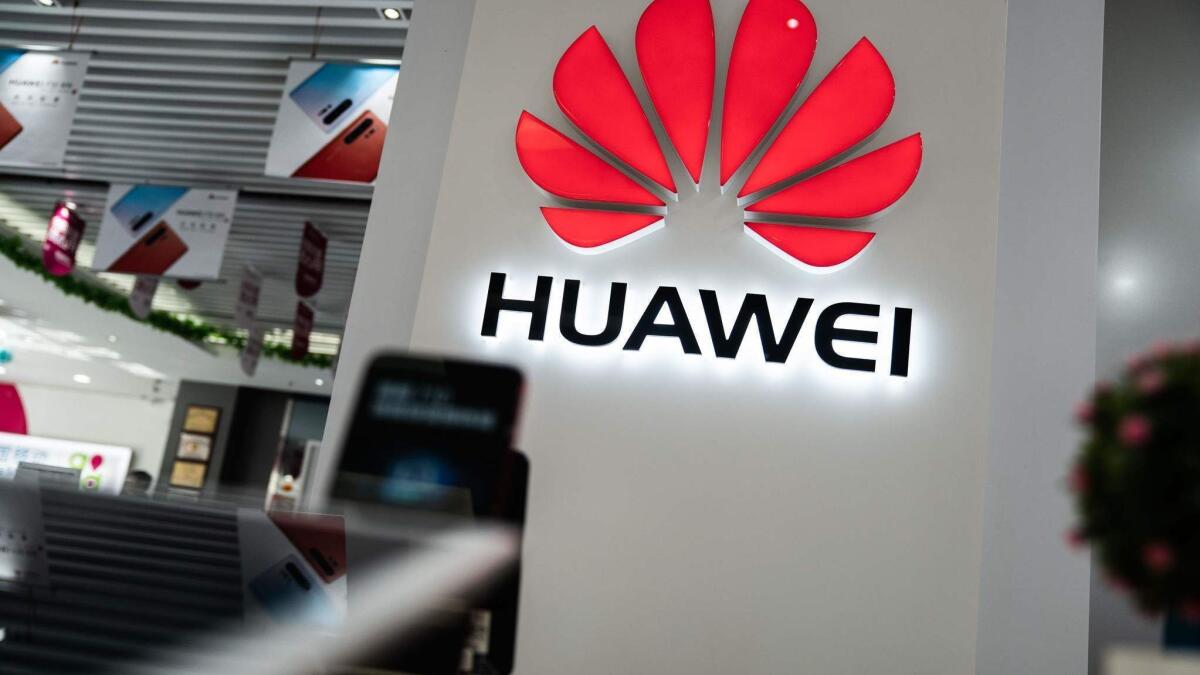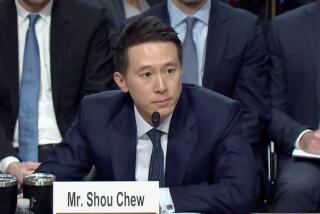Trump’s fight with Huawei could threaten internet access in rural areas

- Share via
In swaths of rural America, along roads where there are just a few farms or homes within a mile-long stretch, customers are so few that the likes of AT&T and T-Mobile don’t bother to build cell towers for coverage.
The only operators providing wireless access are small carriers, many of which can’t afford equipment from suppliers such as Ericsson and Nokia Corp. and instead rely on cheaper network infrastructure from Huawei Technologies Co. and other Chinese companies.
President Trump’s move last week to bar U.S. telecommunications networks from acquiring or using equipment from foreign suppliers left these small broadband companies under a cloud of uncertainty. If they can no longer rely on affordable foreign equipment to run their networks, will they run at all?
“Small carriers face a constant uphill battle both in terms of limited vendors who will supply to us … compounded by the regulatory challenges we’re up against,” said John Nettles, president of Pine Belt Communications, a small telecommunications company in Alabama that relies on the Chinese company ZTE Corp. for its 4G network. “Sometimes it feels like the cards are really stacked against us.”
Last week, the U.S. Commerce Department separately added Huawei and its affiliates to a list of firms considered a risk to national security, effectively preventing Huawei from buying parts from American companies.
Who is Ren Zhengfei -- the man behind Huawei? »
Huawei immediately began to feel the effects of the administration’s crackdown, with Google initially cutting off Huawei from many Android hardware and software services. (After the Commerce Department announced a 90-day buffer period, Google walked back, saying it would continue to work with Huawei in the meantime). U.S. companies such as Qualcomm Inc. and Intel Corp., which provide the Shenzhen telecommunications giant with crucial chips and other special parts, told employees they wouldn’t supply Huawei until further notice.
The move also left rural broadband companies that use Huawei equipment scrambling to figure out what it might mean for their day-to-day operations. Though small carriers don’t export to Huawei, they often need to send technical drawings or data to Huawei in order to maintain their current network infrastructure.
The 90-day window announced by the Commerce Department on Monday allows companies that rely on Huawei equipment for crucial services to continue operations for now.
“In short, this license will allow operations to continue for existing Huawei mobile phone users and rural broadband networks,” Commerce Secretary Wilbur Ross said in a news release. Ross had indicated last week that his department was not looking to harm rural providers.
More pressing to the carriers is the executive order, which the administration will shape over the next five months.
Rural broadband carriers could be forced to rip out and replace entire networks because they wouldn’t be able to import spare parts or software updates to maintain infrastructure, said Roger Entner, a telecom analyst at Recon Analytics.
“If something breaks, what are you going to tell your customer? ‘I’m sorry you have an outage. We don’t know when we are going to fix it because it’s Huawei equipment. Until then, sorry. No internet for you,’ ” Entner said. “You don’t want to tell that to a customer.”
Nettles estimates that replacing Pine Belt’s network would cost $5 million to $10 million. And downtime from installing new equipment would probably cause Pine Belt to forgo $1 million to $3 million in roaming fees, according to Federal Communications Commission filings.
Carri Bennet, general counsel for the Rural Wireless Assn., a trade group for carriers with fewer than 100,000 subscribers, said her organization is waiting to see how the Trump administration’s move will affect members. She estimated that 25% of the association’s members used Huawei or ZTE gear in their networks.
“When something new comes up, we’re sent scrambling,” Nettles said. “What it’s going to mean for us in the long term is difficult to say at best.”
Nettles’ company is small, with about 40 employees and some 60 cell sites. That’s a “drop in the bucket” for big companies such as Ericsson and Nokia, which often don’t see a reason to scale down their services for such small accounts, Nettles said.
Whereas national carriers operate in more densely populated parts of the region, Pine Belt covers many of the roads farmers regularly travel — areas overlooked by big providers. Its 4G network offers rural drivers cell service and even provides household internet access in areas without broadband cable.
“I’m aware of the need to have secure networks. We’re not trying to suggest security is not an important consideration,” Nettles said. “But how do you balance it with providing service to underserved markets — which is mainly where we operate?”
The Federal Communications Commission’s Universal Service Fund funnels money to smaller telecom companies — including members of the Rural Wireless Assn. — to provide internet services in rural areas.
Since June 2018, a group of rural broadband companies mostly in the Midwest have been fighting an FCC proposal that would ban the use of federal subsidies to purchase Huawei and other Chinese equipment that might pose a national security threat.
In a series of filings to the FCC, the Rural Broadband Coalition argued the ban would force many small rural broadband providers into bankruptcy.
Sagebrush Cellular, a cell service provider in northeast Montana, said that when it considered options for 4G deployment, Lucent equipment was double the price of Huawei. Ericsson technology was almost four times the cost of Huawei equipment. One unnamed prominent alternative vendor didn’t even give Sagebrush a price quote, according to the filing, stating only that a small company would be “unable to afford them.”
Sagebrush moved forward with Huawei, spending more than $25 million on its equipment.
It would cost Sagebrush an estimated $57 million to replace its network, the company said in the filing.
Its network size would shrink by two-thirds, losing coverage in many areas where Sagebrush is the only wireless carrier, including 173 miles of the U.S.-Canadian border.
The FCC proposal is still pending, as it awaits guidance from the Trump administration on how it should proceed.
Nettles is waiting to see what will happen with the rule-making process, but he expects he will have to find a new vendor to replace current network infrastructure. The question is: Where will he get the capital to make the change?
Pine Belt relies on federal funds for capital costs. He’s hoping the government will provide assistance. Otherwise, he’s not sure what he will do: Pine Belt could fold as a result.
“I’m really counting on the system to do right by all of us,” he said.
Hussain reported from Los Angeles, Su from Beijing.








